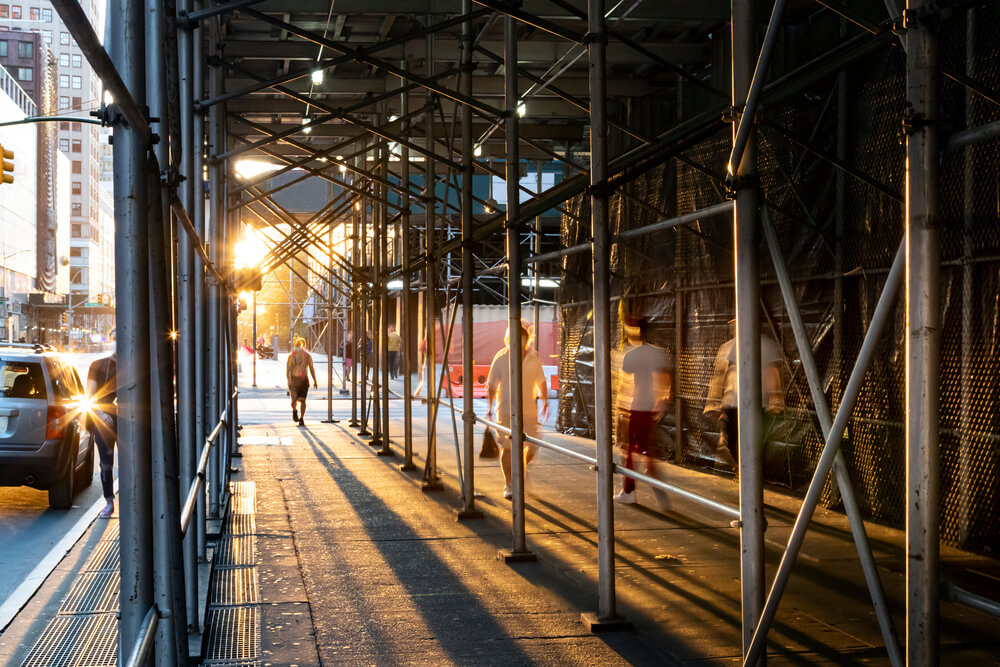
Walking near construction sites is a fact of life for New Yorkers, who have to trust that construction companies and property owners have secured these sites appropriately. Unfortunately, not all construction companies and property owners are concerned with pedestrian safety near their sites, putting passersby at risk of serious injury. You may be entitled to financial compensation if this has happened to you.
Why Construction Sites Can Be Dangerous for Pedestrians
Various hazards could put pedestrians at risk on or near construction work sites in New York City. They include:
- Falling tools
- Heavy equipment
- Fires
- Electrical charges
- Explosions
- Falling debris
- Cluttered walkways
- Hazardous chemicals and other toxic materials
Working at a construction site requires proper training and protective gear. A pedestrian usually won’t have that type of gear or training. Thus, pedestrian safety at the construction site is compromised, and they can get hurt if they walk nearby.
Responsibilities of Construction Companies and Site Managers for Pedestrian Safety
Construction companies must take safety measures to minimize the risk of numerous hazards to pedestrians around construction sites in NYC. For example, they often must erect sidewalk sheds to protect pedestrians on the sidewalk from many dangers, including falling objects from construction zones.
Other ways the construction industry may guard against harm to pedestrians in NYC include:
- Posting clear signage warning pedestrians they are near a construction site
- Erecting barricades to stop pedestrians from easily accessing construction sites
- Keeping tools and equipment stored and secured
- Training all employees on safety procedures
- Maintaining equipment properly
Not all companies take these construction site safety steps. Pedestrians can get hurt as a result.
Who Is Responsible If a Pedestrian Gets Hurt Near a Construction Site?
You may file a workers’ compensation claim if you get hurt at an NYC construction site as a construction worker. You don’t need to prove your injuries resulted from someone else’s actions or carelessness to receive workers’ compensation benefits.
The process differs if you’re hurt as a pedestrian at or near an NYC construction site. In these circumstances, you may file a claim with the insurer of the party who caused your injuries. In many cases, the negligent parties will be the general contractors and the property owners.
However, there could be other potentially liable parties on construction worksites. For example, the responsible party may be the manufacturers or designers of a faulty piece of equipment if an equipment defect harmed you. Subcontractors and vendors could also be held accountable if their carelessness injured pedestrians.
Steps to take that could improve your chances of receiving compensation after an NYC pedestrian construction accident include:
- Reporting the incident to the construction company and its onsite foreman
- Getting the names and contact information of witnesses
- Taking pictures of the scene
- Seeing a doctor immediately after the incident, even if you don’t think you’ve been injured at first
Talk to Our NYC Construction Pedestrian Accident Attorneys
Proving you deserve compensation for an accident that injured you when you were a pedestrian passing by a construction site can be difficult. An investigation will be required to gather evidence of negligence. That is one of many tasks the experienced personal injury lawyers from The Perecman Firm, P.L.L.C., can assist you with.
Learn more about how we can help you seek compensation in a personal injury lawsuit by calling or contacting us online today for a free case review.



